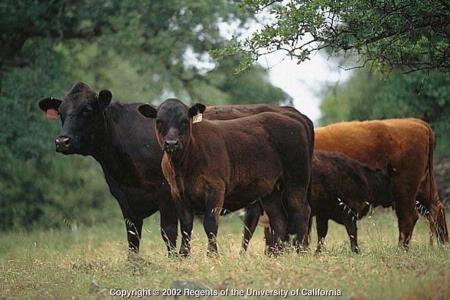Targeted grazing by sheep to control weeds, like our Vines

In their study the researchers wanted to find out if by grazing cattle to reduce the common grass orchardgrass, that more soil moisture would be available to the trees. They found that seedling water stress levels during spring and summer were similar in a cattle-grazed vs. ungrazed area, but in summer, water stress was reduced significantly in the grazed area. Soil water content was higher in the grazed area, especially at the 10-20 cm soil depth. End of season (July) orchardgrass root growth was reduced 18% and 15% with grazing. They concluded that repeated cattle grazing of orchardgrass reduced transpirational surface area and root growth sufficiently to increase soil water availability to seedlings. Thus, prescribed cattle grazing on conifer plantations can enhance seedling physiological status by acting as a regulator of above- and belowground competition.
Additional Reading
Karl, Michael G. and Paul S. Doescher. 1993. Regulating Competition on Conifer Plantations with Prescribed Cattle Grazing. Forestry Sci. 39(3):405-418.